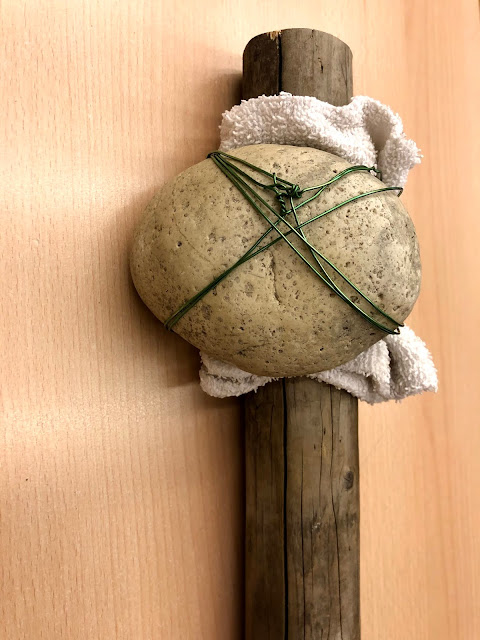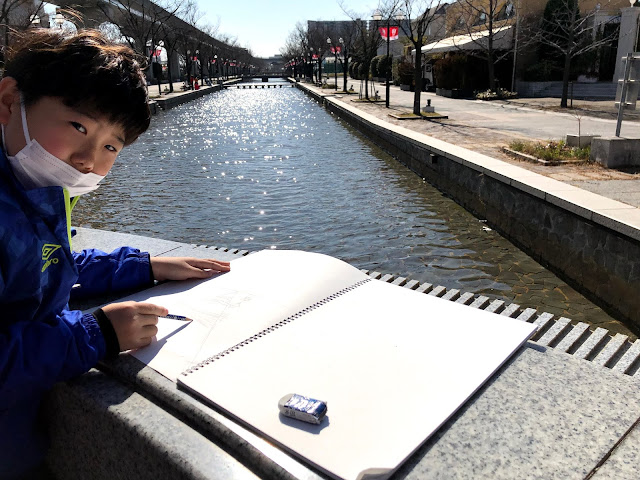This week the students in Grades 3 and 4 have been busy creating various models of art and artifacts for our upcoming Museum of the Ancients. Each will submit 3 to 4 recreated items related to art, architecture, food or farming, language or writing system, currency, clothing, music or instruments, beliefs and tools.
Friday, 26 February 2021
Friday, 19 February 2021
Looking Back in Time
This week, the students were busy researching different aspects of a chosen ancient civilization. To direct their individual research, they were tasked with finding out about the art, architecture, writing/ language, beliefs/ religion/ myths, foods/ farming, tools, music/ instruments, currency/ money and clothing. Students used books on EPIC as well as Google to research the topics and added photos, links and short notes to a Google Doc to keep track of all the information and will choose 3-4 aspects to focus on in more depth next week as they will prepare displays and artwork for a Museum of the Ancients that they will organize for the last week of the unit.
During language time, we learnt about similes and metaphors in order to add more details to the students' personal narratives. The students enjoyed coming up with inventive ways to describe me, "Mr. Brabant is hairy like a bear!" Or, "Mr. Brabant's tummy is a balloon." And of course, my favourite, "Mr. Brabant's hair is like pasta!"
We also FINALLY started our Book Clubs/ Literature Circles. It took a few days, plus the threat of them losing recess time to get them to do their work, but somehow managed to have some discussion on one of the three books below. All of which also ties in nicely with our current unit! Let's hope they remember to read the next agreed-upon pages and complete the jobs that they chose over the weekend as the next meeting will be Monday morning!
Here are a few more of the linear perspective pictures that came back finished this past week.
Friday, 12 February 2021
One Point Perspective Artwork
This week we had a brief introduction to some of the civilizations from the past. After watching short video clips on the Ancient Mesopotamians, Egyptians, Greeks, Romans, Mayans and Chinese the students enjoyed playing a few rounds of Bamboozle (a fun quiz game) as a class. This helped give the students some insight into each of the major civilizations from the past from which they chose one to focus on for an in-depth research project which they will carry out over the next two weeks.
Meanwhile in art, the students continued to work on drawing realistic one-point perspective pictures. Some were based in reality as they drew the hallway, or indoors. Others chose to watch tutorial videos to get more inspiration or to improve their own techniques.
Friday, 5 February 2021
Unit 4: Ancient Civilizations and How Their Influence is Reflected in Modern Society
This week in art we started learning about one-point, linear perspective and spent some time both inside the hallway and outside under the Rokkoliner sketching how the lines all converge somewhere off in the distance on the horizon.
This week we also began our 4th Unit of Inquiry, and we started by looking at some tools from the past, as well as a few modern ones. The students had to examine them closely and think about what they might have been used for and by who. Then, they got together in small groups and shared their thoughts with some classmates which led to some short discussions.
Find out all the information about our new unit here:
Central Idea:
The influence of past civilizations is reflected in modern-day societies
Lines of Inquiry:
- Past civilizations
- How tools influence developments in societies
- Connections between past and present
Key Concepts:
Form, Change, Connection
Approaches to Learning:
Research skills, Self-management
Learner Profile:
Inquirer & Openminded
Learning Goals / Success Criteria:
- Students will be able to explain some of the characteristics of a civilization
- Students will be able to explain how a given tool has had an influence on modern-day society
- Students will curate and recreate artifacts from a chosen civilization and be able to explain the significance of each
Action:
Students will work together to research and prepare artwork for display in a Museum of the Ancients
How to Support Your Child at Home:
Talk with your child about different civilizations or watch TV shows or documentaries on Ancient Civilizations.
Encourage your child to find answers to their own questions by working on an independent research project.
Help your child learn new unit related vocabulary in your home language.
Introduce, or examine some tools that you have around the house that they might not be familiar with.
































